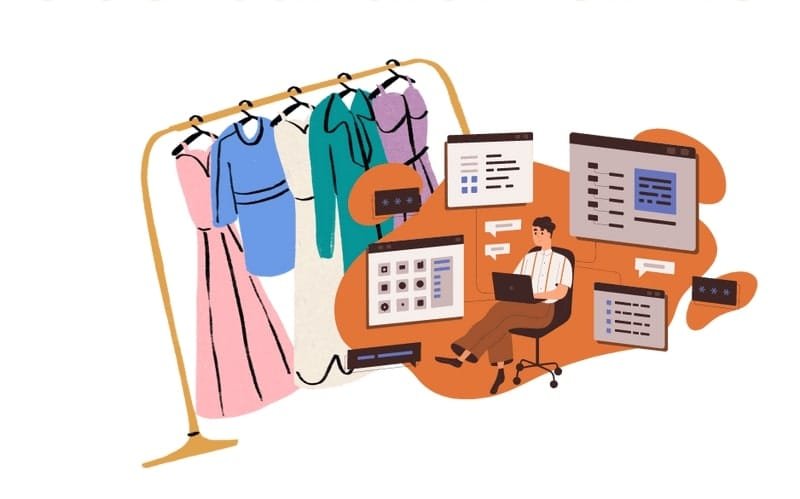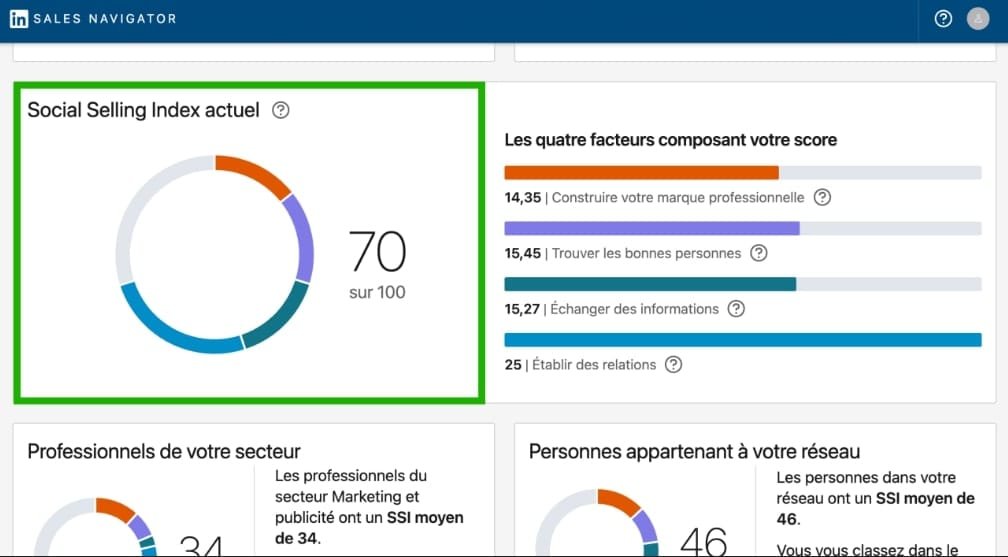The ecommerce apparel industry is experiencing significant growth, with more consumers opting for online shopping due to convenience, variety, and competitive pricing. In 2025, the focus for businesses in this sector should be to set clear, actionable goals that enhance both operational efficiency and customer satisfaction. With evolving consumer expectations and technological advancements, apparel businesses need to ensure that their strategies align with emerging trends to maintain competitiveness.
Setting clear goals for 2025 is essential for guiding the direction of an ecommerce apparel business. A strong online shopping experience is key to attracting and retaining customers, as it directly influences factors like user engagement, conversion rates, and overall sales. Coupled with excellent customer service, businesses can foster lasting customer relationships, improving customer loyalty and lifetime value.

Good Business Goals for Ecommerce Apparel in 2025
As we look toward 2025, apparel businesses should prioritize the following goals to ensure success in an increasingly competitive landscape.
Focus on Customer-Centric Strategies
One of the most important goals for ecommerce apparel businesses in 2025 is to improve customer relationships and enhance customer lifetime value. By offering personalized shopping experiences—such as product recommendations based on previous purchases, customer preferences, and browsing history—brands can make shopping feel more intuitive and tailored to each individual.
In addition, engaging customer service, including live chat support and prompt responses to inquiries, is essential for fostering loyalty. These customer-centric strategies not only enhance the shopping experience but also encourage repeat purchases, ensuring long-term growth and retention in a competitive market.
Boosting Conversion Rates and Average Order Value
To drive business growth, setting specific goals to improve conversion rates and average order value (AOV) is crucial. Optimizing product pages with detailed descriptions, high-quality images, and customer reviews can boost trust and confidence in potential buyers, leading to higher conversion rates.
Additionally, offering cross-selling and upselling strategies—such as suggesting related items or offering discounts on larger orders—can help increase the average order value. With a well-optimized shopping experience, ecommerce apparel businesses can ensure customers make larger purchases, driving profitability and improving overall performance in 2025.
Enhancing Brand Awareness through Multi-Channel Marketing
In 2025, the importance of building a strong online presence through multi-channel marketing cannot be overstated for ecommerce apparel businesses. By leveraging multiple channels—social media, influencer partnerships, email marketing, and more—brands can effectively reach and engage a broader audience, increasing brand awareness and driving sales.
A cohesive marketing strategy across these channels helps to reinforce the brand image, ensuring consistency in messaging and boosting consumer trust.
Utilizing Social Media to Connect with Customers
Social media platforms like Instagram, Facebook, and TikTok have become essential tools for brand awareness and customer engagement in the ecommerce apparel industry. These platforms provide opportunities to create visually appealing content that resonates with the target audience, encouraging brand loyalty and interaction.
Through regular posts, stories, and interactive content, businesses can showcase their products, share behind-the-scenes insights, and connect with customers on a more personal level. Instagram, for example, is ideal for showcasing fashion trends, while TikTok allows for creative, viral content that can quickly boost brand visibility. Social media also enables businesses to receive immediate feedback, enhancing the customer experience and driving higher levels of engagement.
Leveraging Influencer Partnerships for Wider Reach
Influencer collaborations are a powerful way to expand brand visibility and enhance customer loyalty. By partnering with influencers who align with the brand’s values and target audience, apparel businesses can tap into an established community, gaining access to a wider pool of potential customers. Influencers create authentic, engaging content that resonates with their followers, often resulting in increased conversion rates and higher customer trust.
For businesses aiming to reach conscious customers, collaborating with eco-conscious influencers can further reinforce the brand’s commitment to sustainability. Influencer marketing can also drive specific business goals, such as increasing social media followers, generating website traffic, or boosting product sales through time-sensitive campaigns and exclusive promotions.
Implementing AI-Driven Campaigns for Targeted Marketing
As ecommerce businesses continue to grow, adopting AI-driven marketing campaigns is essential to staying ahead of the competition in 2025. AI tools allow apparel businesses to create highly personalized shopping experiences, from tailored product recommendations to customized marketing strategies. By leveraging the power of artificial intelligence, brands can engage with their target audience in a way that feels intuitive and relevant, ultimately leading to improved customer satisfaction and increased sales.
Customizing AI Tools to Reflect Brand Identity
AI-driven campaigns offer the ability to tailor the shopping experience and marketing strategies to align with a brand’s unique identity. By integrating AI tools that analyze customer behavior, businesses can deliver personalized product descriptions, promotions, and content that resonate with their specific target audience. Whether it’s suggesting related products based on previous purchases or creating dynamic email marketing campaigns, AI helps apparel businesses provide an experience that feels individualized.
This customization ensures that marketing efforts reflect the brand’s voice, strengthening brand loyalty and customer trust. Additionally, AI enables businesses to scale personalization, making it possible to create targeted campaigns without sacrificing time or resources.
Analyzing Campaign Data for Optimized Results
Using AI tools to gather and analyze campaign data is crucial for improving performance and optimizing results. Tools like Google Analytics provide insights into key metrics such as customer behavior, conversion rates, and campaign performance. By tracking these data points, businesses can identify trends, assess the effectiveness of their campaigns, and adjust strategies accordingly.
AI-driven insights can help refine marketing efforts by pinpointing areas that need improvement, such as underperforming product pages or marketing channels. These insights also tie into ecommerce budget planning, allowing businesses to allocate resources efficiently and maximize profitability. With data-backed decisions, brands can improve their ROI and ensure their marketing budget is being spent wisely to drive growth in 2025.
Adopting a Data-Driven Approach for Strategic Decisions
In 2025, adopting a data-driven approach is crucial for ecommerce apparel businesses seeking to optimize their operations, improve customer experience, and make informed decisions. By harnessing the power of analytics, businesses can stay ahead of the competition and deliver a more personalized, efficient shopping experience that meets the ever-evolving needs of customers.

Integrating Analytics into Marketing Strategies
Integrating ecommerce analytics tools, such as Shopify reports and customer feedback, into marketing strategies allows apparel businesses to make data-backed decisions that drive growth. These tools provide valuable insights into inventory management, helping businesses track stock levels, monitor product performance, and forecast demand. By analyzing sales trends, brands can identify popular products, optimize pricing strategies, and adjust marketing campaigns to target the right audience.
Analytics also enables businesses to measure the effectiveness of marketing efforts, ensuring that budget allocations are focused on high-performing channels. This data-driven approach enhances marketing ROI and creates more efficient operations, contributing to both short-term and long-term success.
Examples of Data-Driven Success in Ecommerce Apparel
Several apparel brands have successfully implemented data-driven strategies to achieve impressive results. For instance, ASOS uses analytics to track customer behavior, allowing them to optimize their product lines and ensure they are meeting customer demand. By monitoring metrics like conversion rates and customer retention, they adjust their marketing and sales tactics to boost performance.
Nike also uses data to personalize the shopping experience, using customer insights to tailor marketing messages, offers, and even product recommendations based on purchase history. By leveraging these insights, both ASOS and Nike have been able to increase average order value, improve customer retention, and optimize product offerings, ultimately contributing to their growth in the competitive ecommerce apparel market.
Key Takeaways for Setting Ecommerce Apparel Goals in 2025Conclusion
As ecommerce apparel businesses approach 2025, setting clear, actionable goals that prioritize customer relationships, sustainable growth, and the use of technology will be essential for success. By focusing on data-driven decision-making, ethical marketing, and a superior online shopping experience, brands can build strong foundations for the future.
To stay competitive, businesses must engage with their customers authentically, embrace sustainability, and leverage analytics to optimize operations and marketing efforts. Setting clear goals today will ensure that businesses meet the demands of 2025 and beyond, driving both growth and customer satisfaction.
FAQ’s
Why is transparency important in ecommerce pricing?
Transparency in pricing builds trust and encourages repeat purchases. When customers can see a breakdown of costs, including product and shipping fees, they feel more confident in their buying decision.
What data is most valuable for decision-making in apparel ecommerce?
Data such as customer behavior, sales trends, and conversion rates are crucial for making informed decisions about product offerings, inventory management, and marketing strategies.



